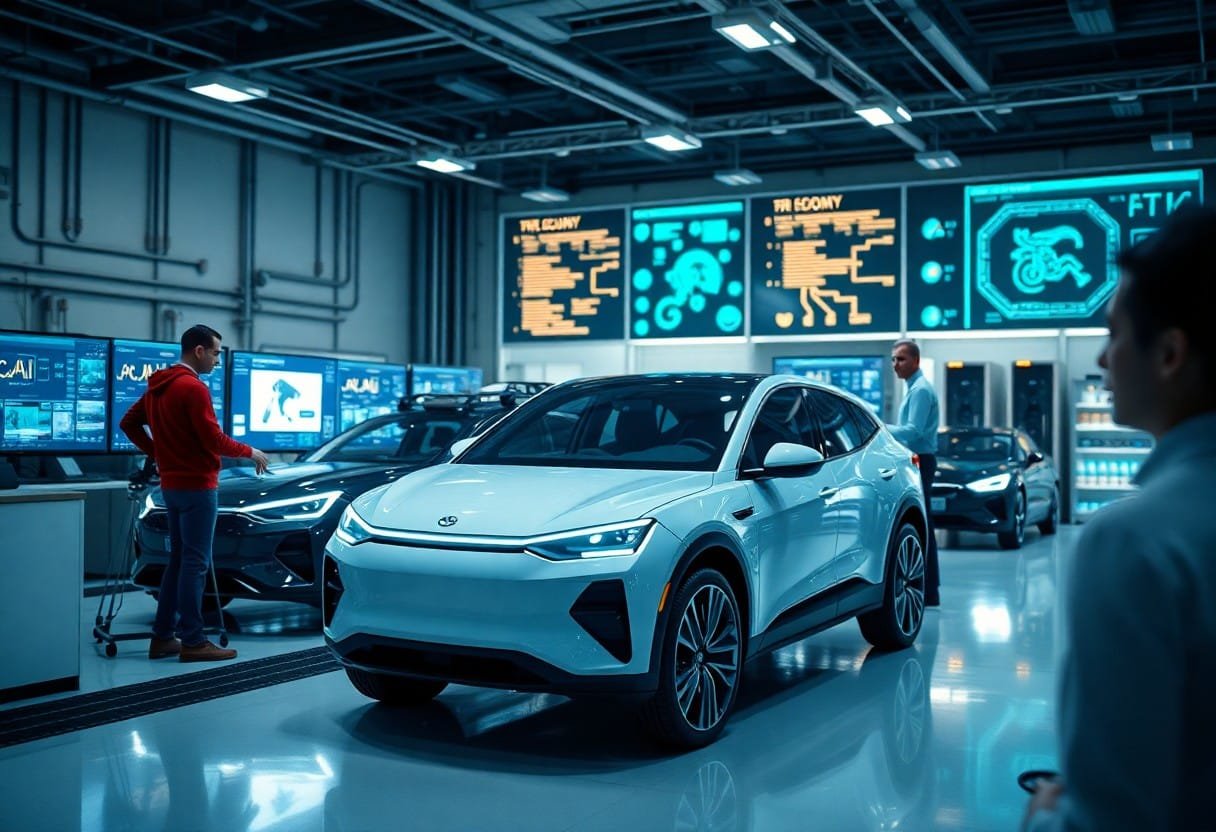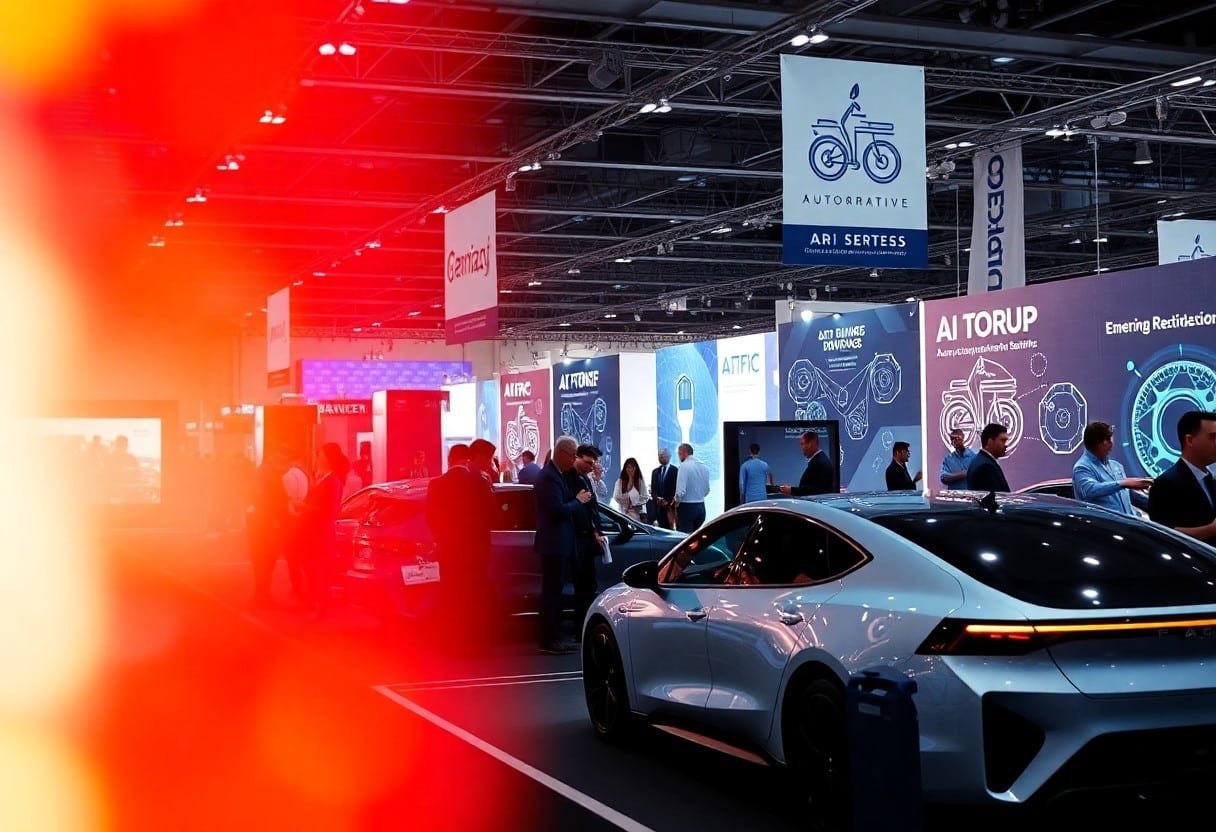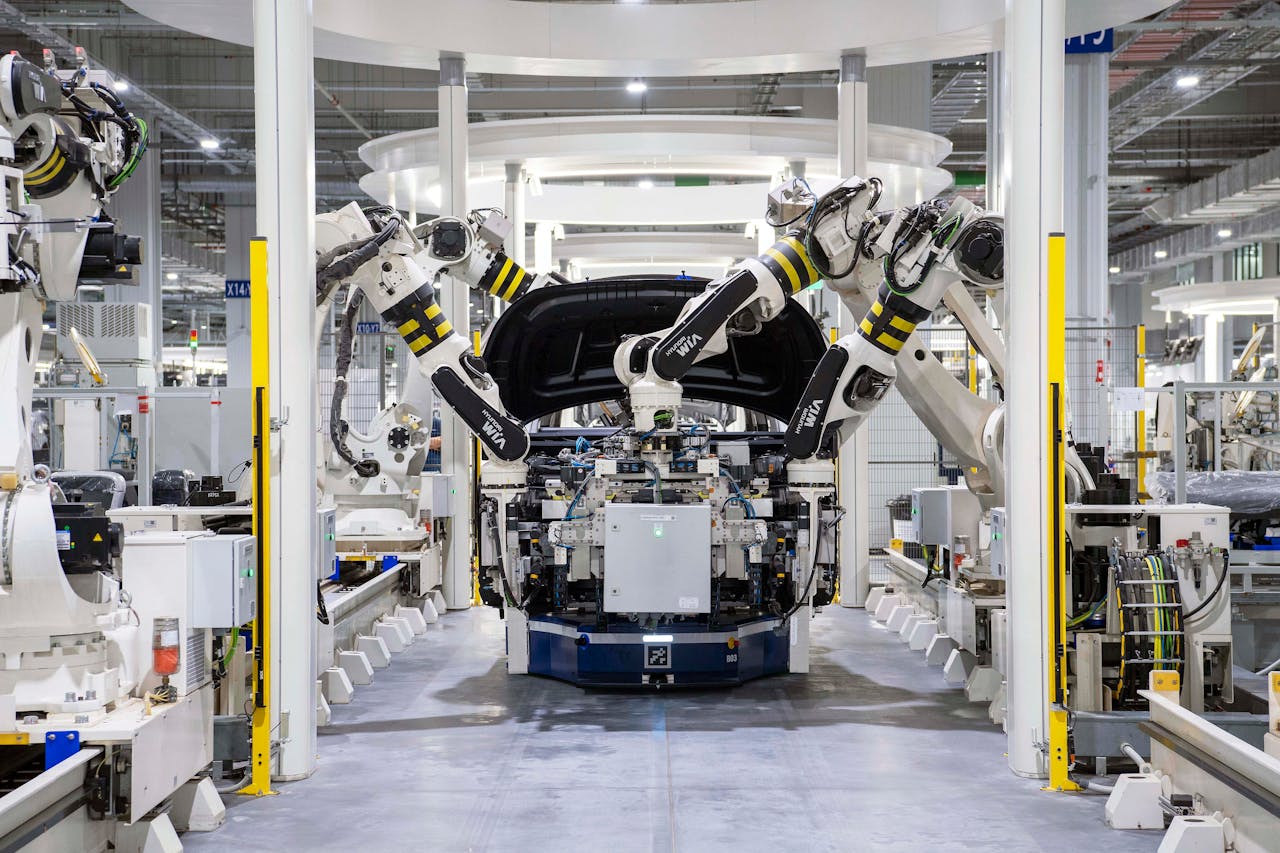It’s an exciting time in the automotive industry as AI IPOs and acquisitions emerge, transforming the way you think about driving and transportation. The infusion of capital and innovative technology is paving the way for groundbreaking advancements. You can explore The Future of AI in the Automotive Industry: Revolutionizing … to see how these changes might shape your future experiences on the road.
Key Takeaways:
- Increased investments in automotive AI through IPOs and acquisitions are driving innovation and competitive advantages among companies.
- Consolidation of technology firms within the automotive sector is streamlining the development of advanced AI technologies for vehicle automation and smart features.
- Collaboration between traditional automakers and tech startups is reshaping industry standards and accelerating the adoption of AI solutions in vehicles.
Driving Forces Behind AI Mergers and Acquisitions
The rapidly evolving landscape of the automotive industry is driven by intense competition and technological innovation, leading companies to pursue AI mergers and acquisitions aggressively. As outlined in Artificial Intelligence Reshaping the Automotive Industry, these strategies enable firms to enhance capabilities, integrate advanced technologies, and stay ahead in key areas such as autonomous driving and data analytics. The drive for consolidation is not just about growth; it’s about survival in a market that’s increasingly tech-centric.
Accelerating Technological Advancements
Investments in AI technologies accelerate advancements in vehicle automation, connectivity, and user experience. By merging with or acquiring AI startups, established automakers can rapidly integrate cutting-edge solutions that streamline operations and enhance product offerings. This collaboration often results in products like intelligent infotainment systems and advanced driver assistance features that enrich user engagement.
Market Demand for Automation and Efficiency
The increasing demand for automation in the automotive sector compels manufacturers to innovate. As consumers seek more efficient, tech-savvy vehicles, companies are drawn to AI technologies that enhance performance, safety, and convenience. Integrating AI into automotive design and production not only meets evolving consumer preferences but also optimizes manufacturing processes, resulting in cost savings and improved quality.
As a reflection of this dynamic, reports indicate that automakers are investing billions into AI solutions specifically aimed at boosting efficiency. For instance, the implementation of AI-driven predictive maintenance can reduce operational downtime and streamline supply chains, appealing to a marketplace that increasingly prioritizes sustainability and smart technologies. The push towards automation reshapes not just product offerings, but the entire operational strategies of automotive companies seeking competitive advantage.
The Ripple Effect of IPOs in the Automotive AI Sector
IPOs in the automotive AI sector are sparking significant shifts across the industry, fostering growth and innovation. As public companies, these firms attract heightened attention, elevating the stakes for competition and collaborations. Your access to cutting-edge technologies increases as startups gain visibility, prompting larger firms to adapt quickly or risk obsolescence. This dynamic creates a challenging environment where agility and the ability to pivot become necessary for success in the evolving automotive landscape.
Capital Infusion: What It Means for Startups
The influx of capital from successful IPOs empowers startups to expand their R&D capabilities and accelerate product development. With newfound resources, your favorite startups can invest in advanced technologies, acquire talent, and launch innovative solutions that enhance vehicle automation and connectivity. This financial support can create a once-in-a-lifetime opportunity for small players to disrupt established norms, ultimately benefiting consumers and driving the industry forward.
Competitive Landscape: Consequences for Established Firms
Established firms face increased pressure to innovate as dynamic startups emerge post-IPO, offering cutting-edge solutions at a rapid pace. Adopting a proactive approach becomes necessary; you may find that long-standing companies start forming strategic partnerships, increasing R&D budgets, or acquiring startups to mitigate the threat and leverage fresh innovations. This competitive tension not only propels the industry forward but also enhances your choices as a consumer, spurring action in a market hungry for disruption.
For instance, traditional automakers like Ford and GM are already ramping up investments in AI technologies, driven by the need to compete with agile startups like Rivian and Lucid Motors post-IPO. By recognizing the innovations brought forth by these newcomers, established companies are increasingly integrating AI-focused strategies into their operations, reshaping their product lines and service offerings. This evolution ensures that, as a consumer, you benefit from an array of innovative, tech-driven solutions in the vehicles of tomorrow, driven by competition that prioritizes consumer needs.
Transformation of Business Models Through Strategic Partnerships
Strategic partnerships are transforming business models in the automotive AI sector, allowing companies to leverage each other’s strengths and resources effectively. Collaborations can lead to more innovative product offerings, increased market share, and enhanced customer experiences. By aligning goals and integrating technologies, automotive firms and tech companies are creating a more dynamic and responsive industry landscape.
Collaboration Between Tech Giants and Automotive Leaders
The convergence of tech giants and automotive leaders has sparked a new wave of innovation. By pooling resources and expertise, companies like Google and Ford are developing advanced AI solutions that enhance vehicle safety and automation. This partnership model not only accelerates technological advancements but also broadens the market reach of both industries, positioning them for future growth.
Innovative Solutions Emerging from Merged Entities
Merged entities are yielding groundbreaking solutions that redefine the automotive landscape. For instance, collaborations between AI startups and established automakers have resulted in sophisticated predictive maintenance systems and improved autonomous driving algorithms, providing drivers with enhanced safety and efficiency. These innovative developments emerge as combined resources tackle complex challenges and accelerate time-to-market for new technologies.
One noteworthy example is the partnership between Nvidia and multiple automakers that has led to the creation of robust AI platforms for self-driving cars. Their collaborative efforts have resulted in systems capable of real-time data processing and decision-making, significantly enhancing vehicle performance and safety. Such synergies not only generate innovative products but also streamline operations and reduce costs, demonstrating the substantial benefits of strategic mergers in the automotive AI space. As these companies continue to innovate together, you can expect even more sophisticated solutions to emerge, transforming the way we interact with vehicles on the road.

Future Outlook: What’s Next for Automotive AI?
The landscape of automotive AI is rapidly evolving, with innovations poised to revolutionize vehicle design, safety, and efficiency. As the demand for smarter automotive systems grows, your vehicles will increasingly integrate advanced AI capabilities, enhancing user experiences and functionality. Industry leaders are focusing on sustainable practices and autonomous technologies, paving the way for a transformative shift in how you perceive transportation.
Trends to Watch in AI Investment and Innovation
Investment in automotive AI is accelerating, notably through ventures targeting machine learning, computer vision, and connectivity. You should keep an eye on start-ups developing AI-driven safety features, predictive maintenance solutions, and personalized user experiences, as these innovations are likely to receive significant funding. Additionally, partnerships between tech giants and traditional automakers are becoming more common, indicating a collaborative approach to innovation.
Predictions for Industry Evolution Driven by M&As and IPOs
As mergers and acquisitions reshape the automotive AI sector, expect a surge in niche solutions that address specific challenges in the automotive space. Your experience with vehicles will evolve as companies streamline operations and consolidate technologies, leading to smarter, more efficient automotive ecosystems.
In the coming years, the automotive AI landscape will undergo significant shifts as big players absorb innovative start-ups to bolster their technological portfolios. For instance, acquisitions focusing on edge computing capabilities will enhance real-time data processing, while strategic mergers might lead to unparalleled collaboration in autonomous driving technologies. You can anticipate a richer integration of AI features within vehicles, creating a seamless driving experience shaped by these corporate activities. As competition intensifies, expect rapid advancements that will not only redefine vehicle functionality but also redefine how you interact with your car.

Navigating the New Normal: Challenges and Opportunities Ahead
The automotive AI landscape is evolving rapidly, presenting both challenges and opportunities. You face a marketplace that demands innovation while also grappling with supply chain disruptions and talent shortages. As established players and new entrants adapt, embracing transformative technologies is imperative. Your ability to pivot and harness the potential of AI will determine your position in this dynamic environment.
Regulatory Hurdles and Ethical Considerations
You must navigate complex regulatory frameworks and ethical dilemmas that accompany AI advancements. Policymakers are working to keep pace with innovation, leading to uncertainties around data privacy, liability, and safety standards. These challenges not only impact compliance but also shape consumer trust in AI applications within vehicles.
Preparing for Disruption in Traditional Automotive Structures
Disruption is inevitable as automotive AI redefines traditional business models and organizational structures. The shift towards software-first design and over-the-air updates necessitates a reevaluation of engineering and production processes. You must be ready to integrate AI deeply into operations, from supply chain management to customer engagement, reshaping how your company operates.
For instance, companies like Tesla exemplify this transformation by prioritizing software development and user experience over conventional manufacturing timelines. As the industry pivots towards connectivity and automated systems, your approach to talent acquisition and training must also evolve. Upskilling your workforce for roles centered around AI and machine learning will be critical in maintaining a competitive edge. Emphasizing agility and innovation in your company culture can help you adapt swiftly to these structural shifts.
To wrap up
Hence, as you navigate the rapidly evolving landscape of automotive AI IPOs and acquisitions, it’s clear that these developments are transforming the industry in significant ways. Your engagement with these emerging opportunities can help you stay ahead and leverage the innovative technologies reshaping mobility and vehicle safety. Embracing the future of automotive AI means staying informed and adapting to the exciting shifts that lie ahead.



